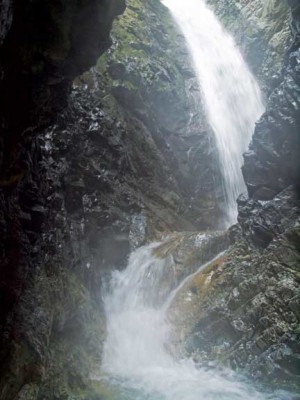by Tina Mitchell
Let’s say you’re a bird. Your breeding area this spring and summer abound with budding plants, fresh fruits, nutritious insects – plenty for you and the kids you raised. But what about the coming fall and winter? To paraphrase The Clash, should you stay or should you go?
In Central Colorado, most species of birds migrate in the fall, at least to some extent. Some just move down from higher altitudes (e.g., Townsend’s Solitaires, Cassin’s Finches, the gray-headed subspecies of Dark-eyed Juncos). Others, including Mountain Bluebirds and some hummingbirds, travel south several states, to winter in Texas or Louisiana. Still others, such as warblers and flycatchers, fly thousands of miles to Central and South America. And really – why not just flap on down to the tropics for the winter? Sounds pretty good to me.
Well, migration is a mighty risky prospect. You expend vast amounts of energy to get to your breeding grounds and then back to your wintering grounds. En route, food can be hard to find, and rest is even harder to come by – especially if you hit bad weather or you have to fly over large bodies of water (e.g., the Gulf of Mexico). When you get there, exhausted and starving, the year-round residents may have already staked out the best territories – and they’ll fight you tooth and nail (beak and claw?) to keep them. Indeed, migrating birds have annual adult survival rates of about 50 percent – meaning that only about half of the adults that migrate north in the spring will be alive the following spring. Migration can be the death of you, quite literally.
So why would you migrate from the tropics to breed in temperate areas such as Central Colorado? If you live year-round in the tropics, you have an annual adult survival rate of about 80-90 percent. Lucky you. But year-round tropical residents have much lower annual reproductive success rates than do birds that breed in more temperate areas, whether they migrate north or reside full-time in temperate zones. So tropics-living birds raise fewer young each year than do those that breed in the temperate zone – in large part because appropriate nesting areas are in shorter supply there.
If you’re in an area where all necessary resources – water, food, shelter – exist predictably year-round, you’ll likely stick around all year. In our area, most chickadees, titmice, nuthatches and jays try to tough it out through the winter. If you live in an area such as ours all the time, you have pretty low annual survival rate, in the range of 20-50 percent. Winters here can – and, odds are, likely will – kill you. But if you survive to the next spring, you’ll probably raise more young than any full-time tropical resident will. Ya pays ‘yer money and takes ‘yer chances …
[InContentAdTwo]
Surprisingly, fall migration actually starts as early as July for some species, such as shorebirds (e.g., Greater and Lesser Yellowlegs, Wilson’s Phalaropes). That coppery, shimmering Rufous Hummingbird or teeny Calliope Hummingbird that appeared at your feeders in July were both southward bound already. When folks think of migration, many picture Canada Geese in a V formation, winging noisily southward across the fall sky. Indeed, some birds do migrate during the day – raptors, cranes, swifts and swallows, kingbirds, crows, bluebirds, robins and finches, among others. But the majority of species migrate almost exclusively at night, which offers several advantages. Birds have more time during the day for feeding. The atmosphere at night tends to be more stable and better for flight. The generally cooler air at night reduces stress. Avian navigation at night relies on a variety of skills, including using the stars, sensing changes in the earth’s magnetic field, and perhaps even smell for some species. Of course, a full moon offers a bonus for nocturnal migrants – and for humans interested in observing this phenomenon. Aim a pair of binoculars at a full moon this time of year and you might catch glimpses of the silhouettes of songbirds, quietly passing by the face of the moon – rather like E.T. on Elliott’s bicycle.
In The Edge of the Sea (1955), Rachel Carson wrote:
There is symbolic as well as actual beauty in the migration of the birds … There is something infinitely healing in these repeated refrains of nature, the assurance that after night, dawn comes, and spring after the winter.
Sentiments to keep in mind as breeding season begins to disappear in the rearview mirror.
Tina Mitchell watches nature with her human and canine family from their perch in the piñon/juniper habitat of western Fremont County. When she needs to pay the bills, she shows up as a research psychologist on the University of Colorado Anschutz Medical Campus in Aurora.


